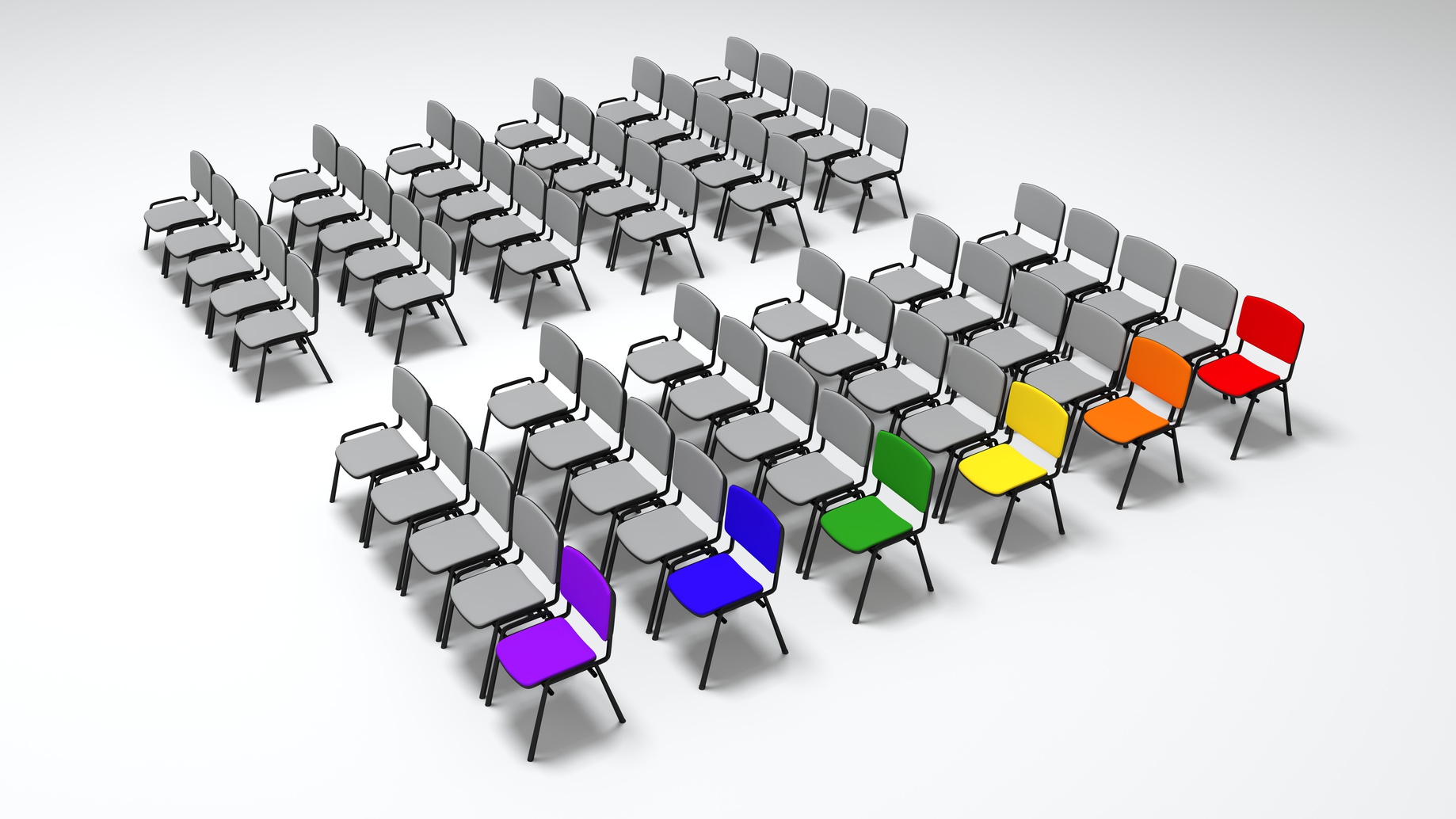An accidental diversity practitioner is what the NBA’s Chief Officer of Diversity and Inclusion, Oris Stuart, calls himself. But the work that he’s done throughout his 15 + year tenure in the diversity industry, is nothing short of purposeful. Although never having directly studied diversity, being a student of life with real experiences, along with his adopted strategies and methodology, gave him the knowledge and resources to help others make change within their organizations.
Stuart, who started his career as a business manager and consultant working with notable companies such as Deloitte and Providian (now JP Morgan Chase), quickly transitioned to a global diversity professional while serving as CEO at Global Novations, what was the world’s leading provider of diversity and inclusion consulting and training solutions before joining forces with Korn Ferry, an executive search and talent management firm, where he spearheaded their diversity and inclusion practices. Since joining the NBA, Stuart has already accomplished a lot with partners and creating conversations around diversity and what it is. He’s also contributed to building and establishing new processes in which they recruit their talent (where they find people, and the kind of people they find). Essentially, he’s helped the NBA, which is already an amazing organization, put diversity and inclusion on the map as a business priority.
Texas Diversity Magazine got a chance to chat with Stuart at the 2017 Tri-State Diversity and Leadership Conference , for a conversation on diversity issues, strategies and leadership and he opens up about his personal thoughts of the industry, advice to future diversity practitioners, what it truly means to be diverse and inclusive and much more.
TD: How would you define Diversity and Inclusion?
OS: Diversity and Inclusion are two different concepts. Diversity is the characteristic that each of us have that make us either similar or different from each other. There is the primary dimension of that you can see or you think you can see, but they really reflect a small part of what makes us diverse. So, diversity includes the choices we make about how we spend our time. The experiences we have at work or in our family relationship and it just includes all the experiences and the cognitive ability and the orientation and the thinking styles, plus all those physical dimensions.
Inclusion however, is a process, it’s an act. Diversity is a fact, we already have this. But inclusion is an act, it’s the process of taking that diverse characteristic and bringing it to life so that it creates real outcome and breakthrough. And results. So those are how the two sort of work together and how they’re different.
TD: So how do you think your background prepared you for a role in diversity? And as accidental diversity practitioner?
OS: I have diversity experience and I’ve had a lot of business experience specifically business experience focused on change. So that means, going into an organization and helping them navigate how to perform at a new level based on some modern technology or new strategies. And what I’ve learned from doing that for 20 years is it didn’t matter how capable the technology was, or how innovative or creative the process was, if you couldn’t inspire the people who were going to run those processes or use that technology, then you really weren’t going to be able to get the results. So, my introduction to the people side of change really helped me understand the power of diversity in terms of understanding people and what their motivators were, how they were wired and being to design things that allowed them to put that change into action.
TD: So why do you think a proven effort of diversity implementation is so imperative to companies right now?
OS: Well, because number one the world around us is diverse and it is so much more complex in terms of how it’s made up, in terms of the amount of information people are using to make decisions like what they buy, where they buy, who they engage with. The workforce is diverse and has new needs and expectations. Businesses are complex and just about all business is global. So that’s a whole nother label. So, if you’re an organization that not only wants to sustain itself, but also grow, I think you also must have the ability to be agile and be able to connect with diverse groups of people, at separate times, in the way they want to be connected with. And I think that’s really the imperative for diversity and inclusion.
TD: As a leader, how important is it to have a correlation between being diverse and being a leader, and how do you connect the two?
OS: Well going back to the earlier question. We are all diverse, so in many respects every leader is diverse. The question is, can a leader connect their diversity with that of the people they are leading. Can they understand the folks on their team, the folks in the organization and inspire them while being inclusive in the process? So inclusive leadership is a critical success factor. And having the ability to treat people not as you want to be treated, or as you think they should be treated but treating people as they want to be treated is really where the breakthrough comes.
TD: Do you think employers concern for diversity matches their efforts?
OS: I would say the pipeline isn’t there if you’re not looking in the right place. So, we’re looking in new places and we’re looking beyond some of the traditional locations where we recruited talent. Organizations need to treat talent like they treat everything else. If you had an organization that needed material to create a product, they’d go find it or create it, they’d go deeper and deeper in the pipeline. And they look at capital the same way. The talent is out there, it may not look like what you expect it to look like. So, you may have to do some different things to attract it, to inspire it and then to assess it for what it’s worth. So, I believe the talent is out there and we’ve just got to do some different things.
TD: What type of methods can companies enable to work towards gaining diverse employees?
OS: There are a new crop of organizations and corporations that create access to those talent pools. For instance, I’m on the board of the National Black MBA Association, they are an incredible organization that provides a touch point for a whole community of talent that otherwise people might not be aware of. We’ve just formed a partnership with an organization called Jopwell and their giving us access to a whole new community of talent. And so, if you look at the recruiting funnel, it really starts by creating job descriptions that are inclusive and not having words and language that get people to rule themselves out so you must start being inclusive at that level. It’s about marketing to the widest possible community. It’s about not waiting until you need to hire someone to build those relationships with those communities as well and really being proactive in that regard. There are a lot of steps you can take at every step of that recruiting process and cycle, to really remove barriers or bias and headwinds, and creating a diverse and inclusive process as possible.
TD: What does a typical day look like for someone in your role?
OS: The NBA is a 24/7 league. We have four leagues now. The NBA, WNBA, NBA G League and now the NBA 2K league. It’s a global business. So, I don’t think for most people there’s a typical day, and there’s at least three things every day that are ongoing. We are talking to our teams about their strategic diversity efforts, and having phone conversations with representatives from our team. We are talking with our internal teams about diversity efforts around talent, around culture and around our supply chain. Then we’re talking with external partners too, and discussing whether their suppliers or agencies are helping us really execute the program. So with our internal teams and external partners, a lot of it is phone dialogue and building strategies.
TD: So what advice would you give to someone who may want to pursue this career?
OS: It’s incredible and rewarding work but it can be challenging. The thing that helps practitioners be as effective as possible is understanding some of the concepts around diversity and inclusion. But even more so it’s understanding businesses and organizations and organizational dynamics, like how things get done in a company or an organization. So, with that in mind, I would encourage anyone who has a passion for diversity and inclusion to make sure that they are studying organizations and businesses first, if they want to be in a business sector. Or other types of organizations. If not, you got to understand those constructs to be able to influence how they operate. Beyond that there’s a lot of proficient reading, there are very significant networks that you can be a part of. And you got to practice it. Get on a committee locally, or an employee resource group at your company and look at curriculum at your college that introduces these concepts. So there are a lot of starting points, there’s no single way to get there, but understanding organizations and how they operate is key.
TD: For the average person, how can someone promote diversity and inclusion in their personal life and try to educate others along the way?
OS: I think it’s important to build a capacity of connection with people that are different; whatever the difference is. And the more that we can do that as individuals, the more that we can collectively build bridges across groups or communities of difference. And so, when you have a situation like we encountered over the past weeks (Charlottesville, VA) I think it’s important not to make assumptions about the people around you and not to draw conclusions about people you’re meeting or talking to. And, to recognize that everyone got to their place of belief or place of behavior for some learned reason, often its rational and maybe not always but often it is. So, it’s important to start with positive intent and engage those folks, give them a chance to explain for themselves and what makes them tick and if you get to a point where you can’t make the connection then that’s ok, but I think often, you’ll find some alignment and maybe through dialogue you can both learn, and relationships can get formed that way. So that’s what we can do every day in our own lives.





